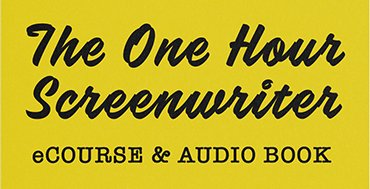Adaptation


The short film adaptation can be a science fiction, gangster, horror, mystery, romance, or any other type of film genre set in any time period, real or imaginary. But the adaptation must remain true to the emotional core of the original story or character.
When I advise anyone about making an adaptation I stress that an artist doesn’t need to be overly concerned about the literal truth but always must stay absolutely true to the emotional truth. That means staying true to the deeper essence of what the story is about. In other words, how does what happens in the story speak to a larger truth about who we are as human beings, what we are in danger of becoming, what we can and should aspire to, how we fail ourselves or others, or how we recover from tragedy, set-backs, or horrible mistakes.
Adapting a novel, a Bible story, or any other text requires the cutting away of everything extraneous. The story must be paired down to its most essential elements. In an “epic story” like that of King David, you will have to choose a single incident in the main narrative. If a scene or a theme moves the story you’ve chosen off track, eliminate it. Keep asking— What is this film about? What does it have to say about today?
A film works best if it is set in the present (whenever that “present” might be in history or your imagination). It must be active and immediate and drive inexorably toward the future. Avoid adaptations that rely heavily on narration or flashbacks that interrupt forward momentum or pull the audience out of the “now” of the story.
Film audiences want to know what happens next. There is only time to experience and very little time to muse or reflect, especially in a short film. Keep asking— How can the audience experience this story more immediately and more emotionally? How can action evoke the feelings in the original material? What external objects and action make internal thoughts and feelings observable.


Cut anything that sidetracks the main story. Choose your main character carefully. If the narrative’s main character is too reflective and is not active enough, is it possible to elevate a more active character or sub-plot to center stage as in THE ENGLISH PATIENT? How does this change of point of view support or enhance the emotional core of the story? If it doesn’t then it’s not the right choice.
Choose a single point of view and stay with that main character. If the main character is not in a scene eliminate it (unless it is absolutely vitally important and we would lose an important story thread without it).
Just because a particular life in the Bible is fascinating doesn’t mean it lends itself to film. Life can be random, messy and rather chaotic— All of which is death to film. Beware of lives lived with too much luck or co-incidence. Film is about action and consequence. If success is the result of happenstance it isn’t dramatic.
Keep asking—Can you distill this life story into a just few essential elements and strong conflicts? Is it possible to choose just one critical incident that reveals who this person is? Does that incident have rising action that drives toward a dramatic and powerful climax? Can you condense and re-order actual events to make them more cinematic?


Sticking too closely to the original material may work against the spirit of the story. Can you find a way to evoke what was powerful about the material in a fresh new way? Keep asking yourself—How does this old material speak to our time? Can you distill the story into its essential elements and find new ways to interpret those elements? What is at the heart of this story? How can a new look at the character and situations expose the beating heart of the story in a way that shows us why it is timeless?




Create a visual map for a character’s emotional journey. Pull stories from character rather from rote story structure beats. Some of the largest international media companies, use this in story and character development.


A clear concise guide for writers and producers to have by their side as they embark on a project. It gives a really vital reminder of what is key for story success.

No comment yet, add your voice below!